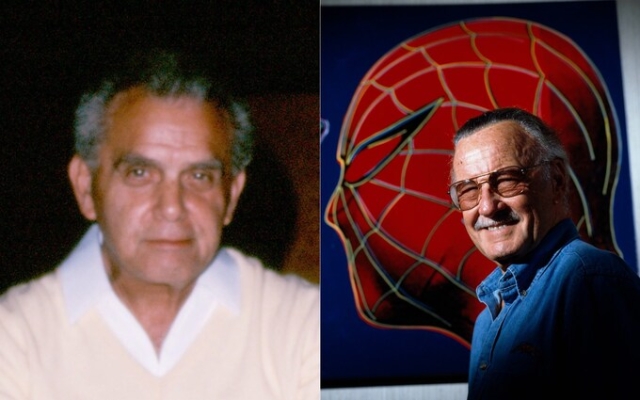 Marvel comic book artist Jack Kirby (left) and Stan Lee Photo: Mark Hempel/Getty
Marvel comic book artist Jack Kirby (left) and Stan Lee Photo: Mark Hempel/Getty
Comic book artist Jack Kirby told stories. One of his best stories comes from unofficial sources: In 1961, Kirby walked into the offices of what became Marvel Comics and found Stan Lee, also known as «Stan the Man,» the much-appreciated Marvel editor, sitting at his desk sobbing.
Publisher Martin Goodman planned to drop comics from the company's portfolio. The office furniture has already been removed. Marvel comics will be erased from comic book history. And I needed a job! Kirby later said. «I had a family and a home, and all of a sudden Marvel is falling apart.»
Kirby told Stan to hold off with Goodman. He could make comics sell. Kirby sensed that superheroes, who had gone out of fashion since the Golden Age, were ready to make a comeback.
So, as Kirby said, he presented a «blitzkrieg» of character concepts: the Fantastic Four, the Incredible Hulk, Spider-Man, Thor, and the X-Men. «I saved Marvel's ass,» Kirby later said. Indeed, these heroes were central to the boom period of the sixties that came to be known as the Age of Wonders. In 2023, Kirby's legacy of creativity has long been a dominant, enduring force in mainstream pop culture. Comic book fans know Jack Kirby simply as «The King».
But Stan Lee, long recognized as the creator of the Marvel Universe, in his own way influenced the way he invented these classic characters. This was a source of tension between the icons.
For knowledgeable comic book readers, Lee, who died in 2018, was a charismatic yet cunning self-promoter. Backed by numerous roles in fan-acclaimed films, Lee's reputation as a Marvel master has since expanded to become — unbelievably — the highest-grossing actor of all time.

Stan Lee's new documentary about Disney+ a typical example of Lee being portrayed as the only true creator. The Doctor states that the characters and stories were mostly Lee's and he wrote every word. Artists and collaborators Jack Kirby and Steve Ditko were only there to fill in the pages.
Kirby's son, Neil Kirby, posted a statement on Twitter attacking both the documentary and Lee's ego. «Stan Lee was lucky enough to have access to the corporate bullhorn and media, and he used them to create his own myths about creating the pantheon of Marvel characters.»
Lee's version of events, as detailed in the document, offered new characters to his publishers and artists, each one becoming a pop culture icon.
Neil added, «Can we assume that the other co-creator never walked into Lee's office and said, 'Stan, I have a great idea for a character!' According to Lee, it was always his idea.» /p>
And the influence of Jack Kirby is undeniable. “When you close your eyes and think of Sixties superhero pop art, it’s Jack Kirby,” says Thomas Scioli, writer-artist and biographer of Kirby. “It’s in your face, it’s alien, it’s soothing, it’s scary – it has a lot of weirdness and personality. Art is one thing, but it's ideas, characters, stories. If you've heard of any superhero other than Superman, Batman, and Wonder Woman, chances are Jack Kirby created it, helped create it, or had a hand in it.»
 'Chained to the Table': Jack Kirby and Joe Simon work at Timely Comics, Marvel's predecessor. Credit: AP Photo/Titan Books
'Chained to the Table': Jack Kirby and Joe Simon work at Timely Comics, Marvel's predecessor. Credit: AP Photo/Titan Books
Kirby went beyond raincoats and spandex. He was a master and innovator of almost all comic genres. «Superheroes tend to show up exactly when they're needed, and so does Kirby,» said comic book legend Will Eisner. “Every time the comics industry needed someone to kick her ass or give her a new direction, Jack came along. He was like a trooper with a pencil.”
Chewing on a cigar as he worked, he was known for excruciatingly long drawing sessions—»chalkboarded,» as he called it—and unstoppable ideas. Fast and extremely prolific, he possessed a hand speed that one of his superheroes would have possessed (during his youth, Kirby was said to be too fast for coal). Kirby was also emotionally and creatively involved in his fantasy stories.
“I always say he was a cartoonist,” says Randolph Hoppe, comic book historian and founder of the Jack Kirby Museum. “He really believed in the characters when he drew them. Sometimes other people would step in and ask, “What happened to Jack? He seems a little crazy!” No, he was just delighted.”
Kirby was familiar with combat. Raised on the Lower East Side of Manhattan to Jewish immigrants from Austria-Hungary, he was a street fighter. Later, when Kirby co-created Captain America, he was threatened by the American Nazis. After one threatening phone call, Kirby rolled up his sleeves and left the office to face them, only to find that they had long since fled. Shortly thereafter, he fought the Nazis in Europe for real. However, the battle that defined much of his career was for proper recognition and a fair salary.
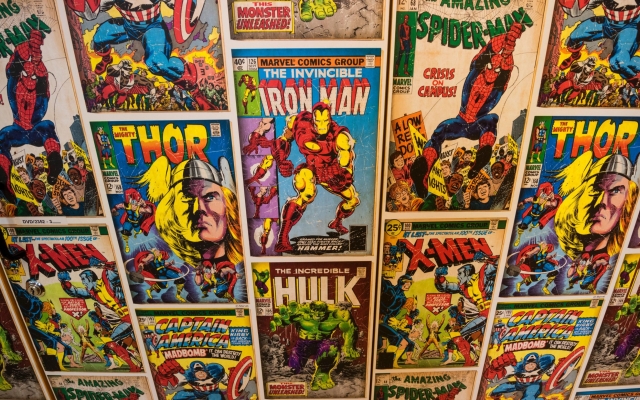 Kirby helped create many classic comics Marvel, including Captain America and Thor. Author: Alami
Kirby helped create many classic comics Marvel, including Captain America and Thor. Author: Alami
Jacob Kurtzberg was born on August 28, 1917. He was inspired by—so the story goes—a science fiction magazine he found in a rainy ditch. “Pulps were my writing school,” Kirby said. “Cinema and newspaper strips were my drawing school. I learned from everything.» So he painted. And when the future king of comics had no paper, he drew on the walls and on newspapers from the neighbor's garbage cans.
A child of the Great Depression, earning enough money to scrape together was essential. He sold newspapers as soon as he grew up. In one story, Kirby enrolled in an art course at the Pratt Institute, but left after a day because his father lost his job. Kirby said that he was itching to get out of the ghetto.
His art eventually made money, albeit meager at first. Kirby worked on Popeye for the animation studio Fleischer, then drew political cartoons and parody newspaper comics, cheap copies of more popular characters.
According to Kirby's aide-turned-biographer Mark Evanier, Kirby had something to do with the American dream. “You will make your boss rich and he will take care of you,” Evanier wrote. «Jack's whole life he believed it, no matter how many times the bosses got rich and he didn't.»
Kirby worked under Will Eisner and Jerry Iger — in sweatshop conditions — elbow to elbow — and for publisher Victor Fox, where he met Joe Simon. They formed a partnership. «Perhaps the first superstars in the field of comics,» says Thomas Scioli.
The original boom of superheroes — the Golden Age — began with the release of Superman in 1938. says Randolph Hoppe. «But Simon and Kirby were the stars that grew out of it.»
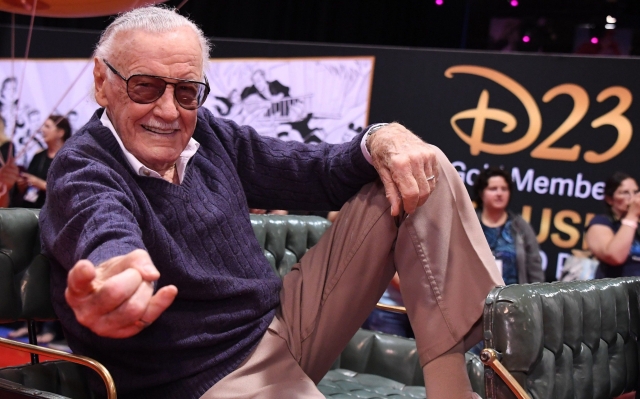 Snitch? Stan Lee in 2017 Photo: Image Group LA
Snitch? Stan Lee in 2017 Photo: Image Group LA
While working at Timely Comics, the company that became Marvel, they created Captain America. On the cover of the first issue, released in December 1940, Cap punches Hitler in the face. As Randolph Hoppe says, Kirby and Simon were two Jewish children proud of American freedoms who prevented the US from entering the war. They heard stories from the old country about what is happening in Europe.
Harvey Kurtzman — later the founder of Mad magazine — described how Kirby's fast-paced, frenetic art transformed superheroes from costumed humans into extraordinary creatures: panels. There was such rage and energy in the work that it was impossible to contain it. Kirby was an absolute force.”
But they were unhappy with their share of Captain America's success. In pursuit of extra work and paychecks, Kirby and Simon worked part-time with other comics. When Timely owner Martin Goodman discovered they were planning to move to National (later DC) Comics, he fired them. The duo blamed their young assistant, a guy named Stanley Lieber, later known as Stan Lee, for the denunciation. Stan has always denied this.
After moving to the National, the superstars were so confident in their creative vision that they made paper airplanes from other people's scripts.
Kirby's career was interrupted by the war. «Of course I was called, but I didn't mind leaving,» Kirby said. «You didn't complain about it because it was necessary.» It was sent to Europe and landed on Omaha Beach on August 23, 1944, two months after the D-Day landings.
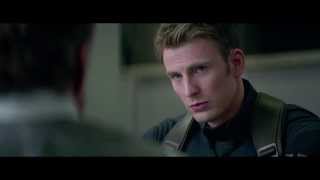
Under the command of General George S. Patton, Kirby traveled south and was sent into enemy territory as a scout to make detailed maps. His fellow soldiers knew his name — his comics «Captain America» and «Commando Boys» became hits. Kirby was frostbitten and almost had his legs amputated.
After the war, superheroes lost their magic. Instead, Kirby and Simon worked in other genres of comics: crime, horror, western, war, and even wacky 3D comics.
More interestingly, they invented romantic comics. “They were trying to figure out what the hell to do,” says Randolph Hoppe. “You can imagine how they look at the old newsstands — with these vast genres — and see romantic magazines and real confessions. They decided: «Let's make one of these and sell comics to women and girls who are interested in romance!» They did it and he exploded.”
In the 1950s, the industry was in a dire state of moral panic over crime. both horror comics and small publishers go out of business. Kirby and Simon had gone their separate ways.
Kirby was in decline, having nightmares about not making money and lacking the business acumen of his former partner. Due to a costly quarrel, he was ostracized by the District of Columbia. Kirby was forced to return to Marvel and then publish as Atlas Comics. He drew monster comics for Stan Lee, his assistant turned boss.
It was Steve Sherman, Kirby's future assistant, who told the story of the «blitzkrieg» of Kirby's characters. However, Stan Lee would tell a different story: that Stan himself created the Fantastic Four — the answer to DC's Justice League of America, a superteam consisting of Superman, Batman and Wonder Woman.
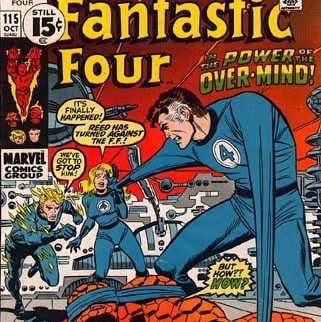 Fantastic Four comics by Jack Kirby and Stan Lee
Fantastic Four comics by Jack Kirby and Stan Lee
“I would venture to say that Jack and I created the Fantastic Four in a way,” Stan later said. «Although the title was mine, the characters were mine, and the concept was originally mine.» There were similar controversies over the creation of Spider-Man, which Kirby said came from an old character he was working on. New Disney+ documentary details of how Spider-Man artist Steve Ditko was also upset with Lee about Spider-Man's true parentage.
However, Stan Lee and Jack Kirby make up a formidable superteam — a combination of Kirby's captivating imagination-fueled art, along with Lee's animated dialogue and friendly, fan-friendly editorial («Excelsior!»). Stan even did superhero poses for Kirby, creating eye-catching covers.
«They had a sort of sixth sense that took them both by surprise,» Cioli says. “There was a time when this great creative synergy created great things.”
They developed the «Marvel Method». Instead of sketching out the script, they outlined the main plot; Kirby drew him first, dictating the story and taking notes, and Stan then wrote in dialogue. Kirby's work became Marvel's signature style, and he trained new artists. Stan Lee also liked how Kirby started his new games.
The brilliance of the Marvel characters lay not in their extraordinary powers, but in their day-to-day problems: Spider-Man's angst; internal conflict of the Hulk; Fantastic Four family dynamics. “It was the result of working in all these genres – romance, love triangles, military themes,” says Scioli. “Kirby spent the first half of his career doing everything and focused it all on one genre. He had these epic superhero conflicts that were more than Batman stopping a bank robber.”
Randolph Hoppe agrees. «I argue that romantic comics helped create Marvel,» he says. “Not just fantastic ideas, but people.”
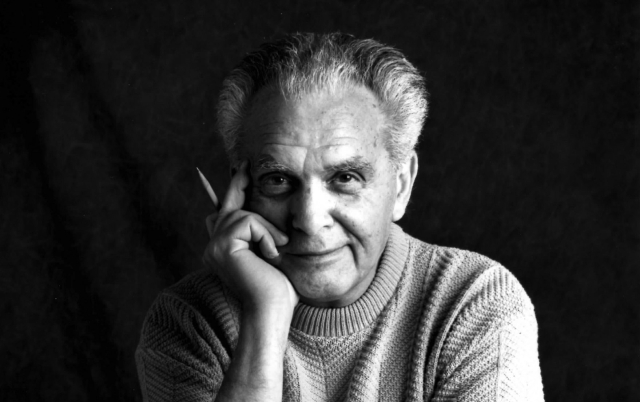 'Pencil Cavalry': Comic book artist Jack Kirby Credit & Copyright: wyman-skaar
'Pencil Cavalry': Comic book artist Jack Kirby Credit & Copyright: wyman-skaar
In 1962, just a year after Kirby found Stan in tears, Marvel sold 19,740,000 comic books. From these comics, Kirby created 1,158 pages.
The Galactus trilogy, in which the Fantastic Four battle a planet-devouring godlike creature, is considered the greatest triumph of Lee and Kirby's partnership.
Other games developed by Kirby include Ant-Man, Iron Man, and The Avengers. He also created the Black Panther and the Silver Surfer and created Nick Fury with a shock of gray hair and cigars in his own image.
“His value to the company was enormous,” Mark Evanier wrote. «There was no compensation.» Indeed, Kirby's characters were sold without royalties; the company will not provide him with long-term financial obligations; and Martin Goodman made promises that were never kept.
The New York Herald Tribune stoked tensions with an article about Marvel that portrayed Stan Lee as a true genius and Jack Kirby as an «assistant foreman.» When Goodman sold Marvel, the new owners also saw Stan as a man.
There were more disappointments: Stan changed Kirby's stories and, according to Kirby, simply paraphrased his notes; Kirby later said he wrote everything, even the dialogue.
“Stan Lee and I have never collaborated on anything!” Kirby said. «I've never seen Stan Lee write anything.» Other artists have questioned how much Lee actually wrote, although Stan took responsibility and the writer's fee. In 1970, Jack Kirby moved to Washington.
“For those who read at the time, it was very important,” says Hoppe. «And it was a big deal for the hopes and dreams of the comics industry.»
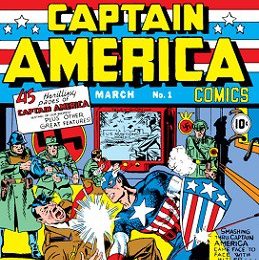 Captain America was the first comic Kirby created
Captain America was the first comic Kirby created
Kirby worked with an old artist buddy turned DC head Carmine Infantino. “Jack and Carmine dreamed big—college-age readers, better methods, and better product quality,” says Hoppe. “It got in the way of the drug industry, distributors and bad luck. They rode high on a boar, but this did not happen.”
Among the genre's stunning adult-oriented experiments was an erotic comics walk, a strip called Galaxy Green about superwomen looking for intergalactic partners. Randolph Hoppe laughs at the mention of it: «Jack's two pages draw female figures from angles like he's never done before!»
More significant was the creation of the New Gods, the Eternal Men, and Mister. The Marvel — collectively known as The Fourth World — is a series of intergalactic adventures with celestial super-aliens.
«The new gods have given DC a cosmic level,» says Hoppe. «Jack brought his universe stuff and helped bring DC together.»
It was too difficult and ambitious. «New Gods» and «Eternal Men» were effectively mothballed. «One of the worst days of my life,» Kirby said. Fifty years later, the New Gods have become an integral part of the DC Universe. The villain, Darkseid, is featured in Snyder's version of the Justice League movie. Kirby partially copied it from Richard Nixon. «Jack hated Nixon!» Hoppe laughs.
Kirby's DC Universe titles were dropped as quickly as they were made, and he returned to Marvel in 1975. He created The Eternals, the Marvel equivalent of The New Gods. The Eternals (based on the 2021 movie) were an example of how Kirby unleashed: gods, mythology, epic wars in space. The themes go back to children's folklore or «wonder tales» as Kirby's mother told them.
These are my favorite stories of him making gods, says Thomas Scioli. «He always seemed to put a little more soul into them.»
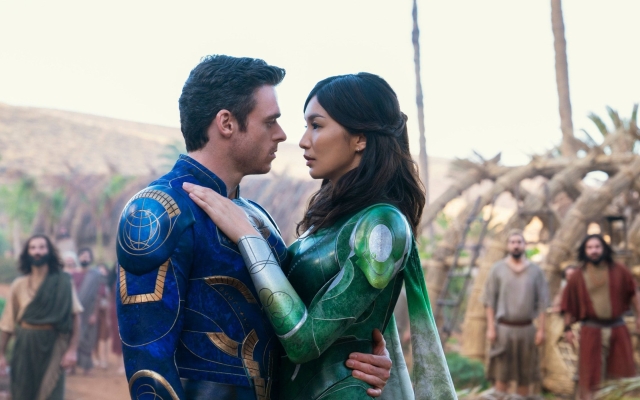 Richard Madden and Gemma Chan in The Eternals. Credit: Sophie Mutevelian/Marvel Studios/The Hollywood Archive/Avalon. >
Richard Madden and Gemma Chan in The Eternals. Credit: Sophie Mutevelian/Marvel Studios/The Hollywood Archive/Avalon. >
Kirby's return to Marvel didn't catch on. As Mark Evanier noted, Kirby drew Captain America again — 35 years after he was first created, but for about the same money. He went to work for Hanna-Barbera and other animation studios.
In the mid-eighties, he fought publicly against Marvel to get his original artwork back in a rights dispute. He played about 1,900 pieces — just a fraction of what he produced — but also received support from comic book fans and industry players. He knew that the preservation of a work of art, now properly revered and recognized by the world of comics, would support his family after his death.
In subsequent years, he suffered from impaired vision and a stroke that struck his drawing arm. . He died of a heart attack on February 6, 1994.
After the launch of the MCU, his children fought with Disney for the rights of characters created by Kirby — characters that changed modern blockbusters. «Jack said, 'Hollywood was going to come to San Diego Comic-Con looking for ideas,'» says Hoppe. «That was when Comic Con had 30 tables in the hotel ballroom.»
The King was way ahead of his time. “He knew that stories and myths could explain things to people and entertain them,” says Hoppe. «He had so many stories to tell.»
Stan Lee works for Disney+ now









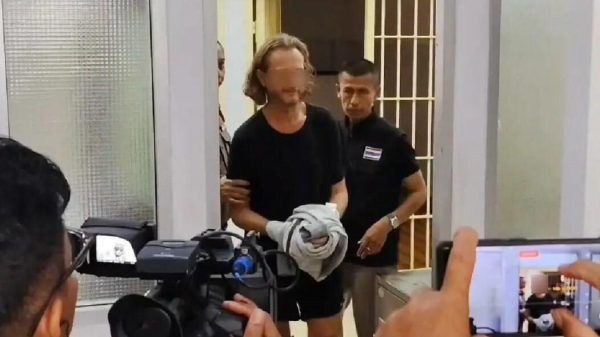


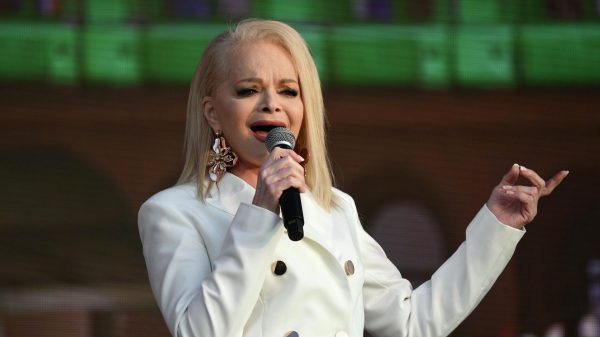

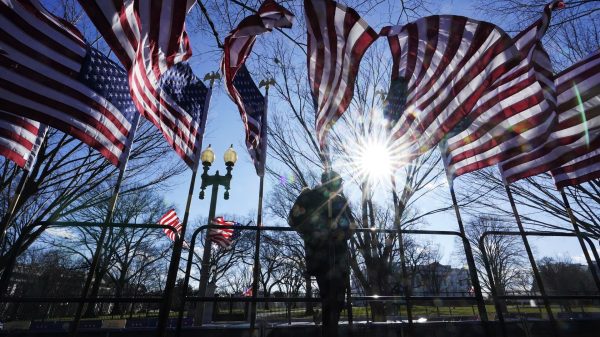


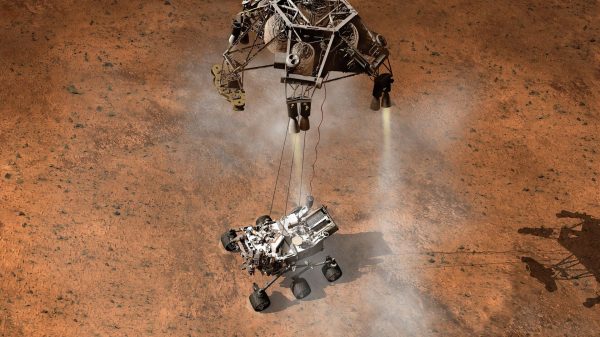










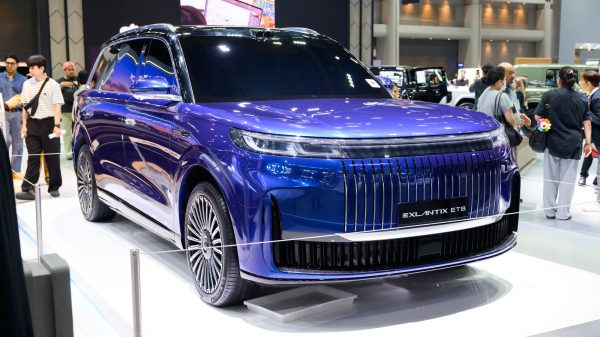
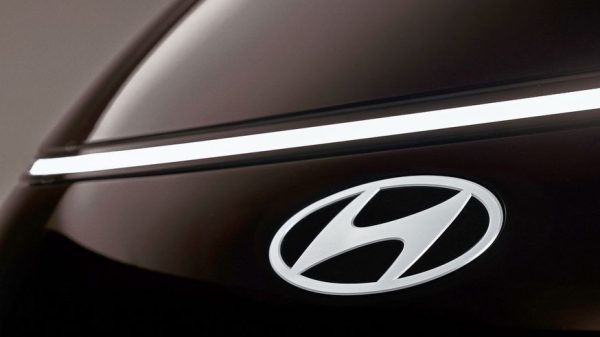




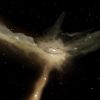
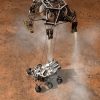











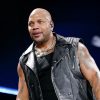





Свежие комментарии